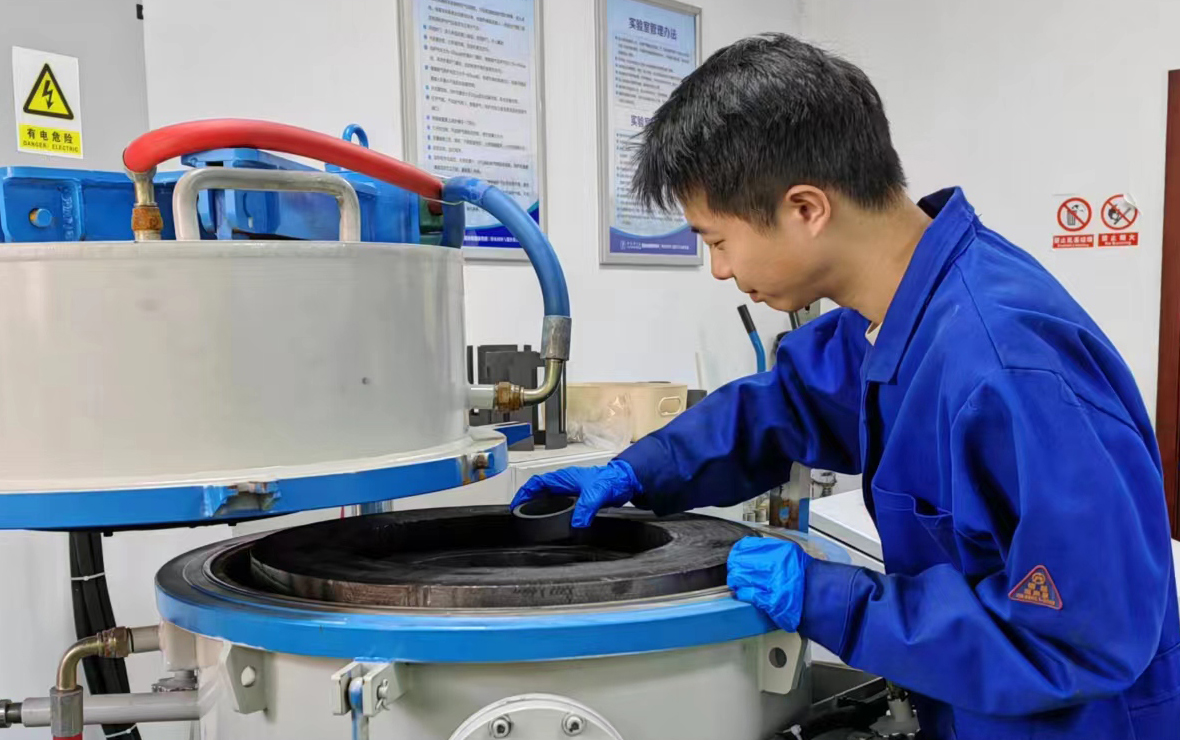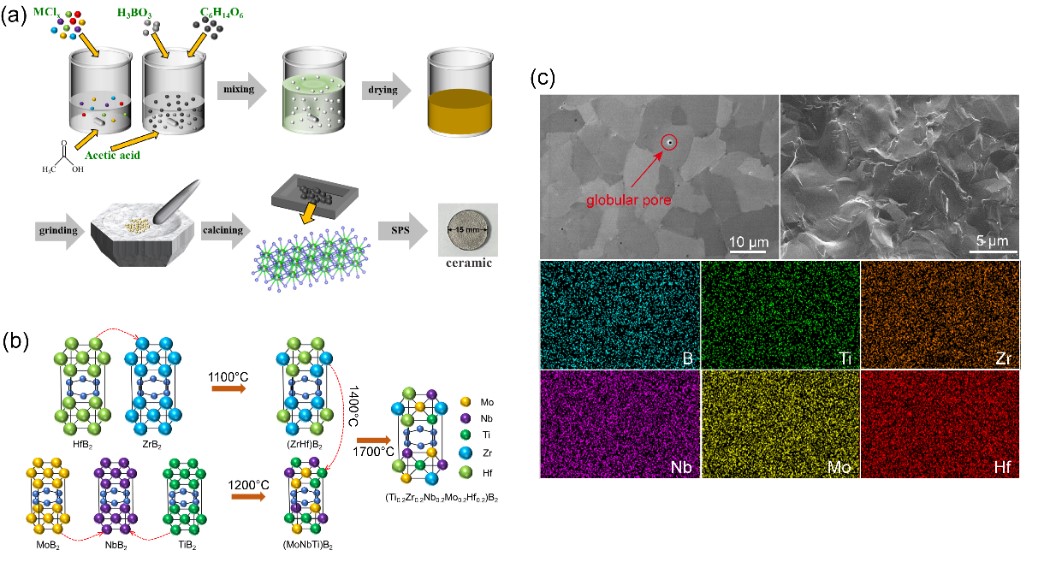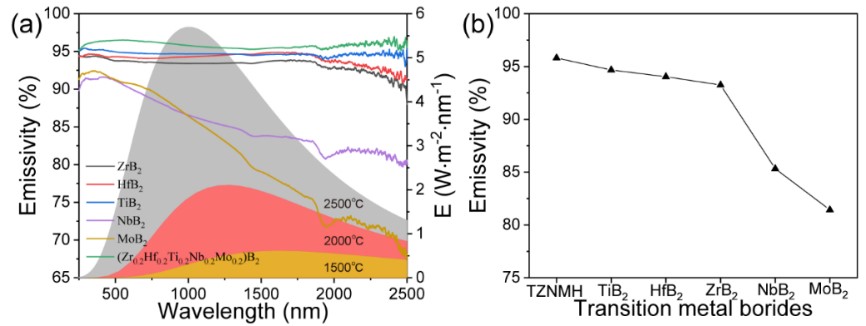Research
High-entropy Boride Ceramic Developed with Excellent Thermal Emissivity and Mechanical Properties
| By
These findings were published in Journal of the European Ceramic Society.
Ultra-high temperature boride ceramics have emerged as promising materials for extreme environments due to their outstanding high-temperature properties. However, borides are prone to oxidation and ablation in strong oxidation flow environments. To mitigate these challenges, materials with high thermal emissivity are utilized to reduce the temperature gradient and thermal stress, consequently enhancing their resistance to oxidation and ablation. Additionally, owing to the inherently low damage tolerance of borides, they are susceptible to fracture upon exposure to thermal shock. High-entropy boride with unique performance offer a solution to these issues. However, certain aspects remain unclear, including the design and synthesis of high-entropy boride powders, the mechanism behind the single-phase solid solution, the factors contributing to enhanced thermal emissivity, the processes of densification and mechanical property enhancement.
To address these challenges, the researchers followed high-entropy design principles. They selected titanium (Ti), zirconium (Zr), niobium (Nb), molybdenum (Mo), and hafnium (Hf) as the key elements for the solid solution.
Utilizing a method called flocculation-precipitation assisted boro/carbothermal reduction proposed in a previous study, they synthesized (Ti0.2Zr0.2Nb0.2Mo0.2Hf0.2)B2 (TZNMH). These powders had tiny particles averaging 495 nm in size, with low carbon and oxygen contents.
The X-Ray Diffraction patterns revealed that TZNMH underwent a two-stage process to form a single-phase solid solution.
First, metal oxides transformed into intermediate diborides, then these diborides acted as a host lattice for other metallic elements, forming the final high-entropy solid solution. At room temperature, TZNMH powders demonstrated near-blackbody radiation characteristics, with high thermal emissivity exceeding 95% in the 0.3-2.5 μm wavelength range, better than individual diborides.
Computational simulations revealed that TZNMH's enhanced emissivity was due to robust intraband electron transitions and reduced conductivity resulting from its high-entropy composition.
The nearly fully dense TZNMH bulk was prepared. It exhibited an extremely high hardness exceeding 30 GPa both before and after annealing at 1800°C for 60 hours, attributed to the strong hybridization between metals and boron.
This work elucidates the design principles and solid solution mechanism of high-entropy boride ceramics, providing alternative solutions for high-performance thermal protective materials.

Researcher is taking synthesized high-entropy ceramic powders out from the high-temperature calcination furnace. (Image by DANG Xian)

Fig. 1 Preparation process and microstructure of TZNMH. (Image by Dang Xian)

Fig. 2 Radiation characteristics of TZNMH and the five individual diborides. (Image by Dang Xian)
- Attachments Download:
-
contact
Prof. HUANG Zhulin
E-mail: zlhuang@issp.ac.cn


